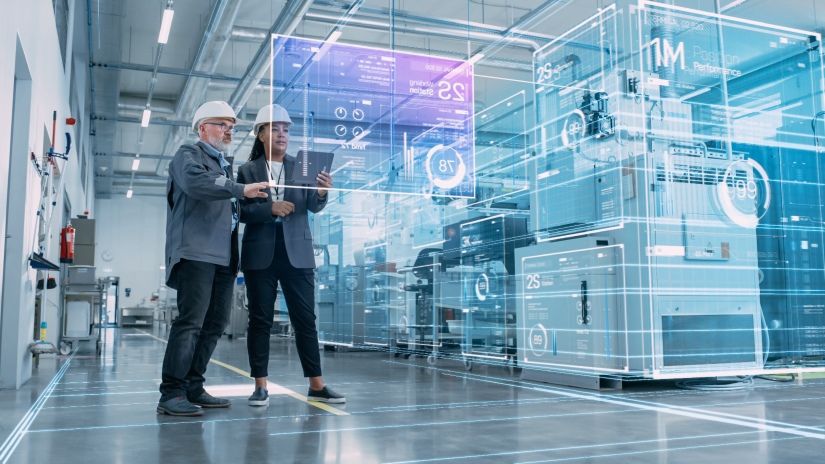By Rajeev Sharma, Vice President of Engineering, GlobalLogic Inc., a Hitachi Group Company
As with many great technological advancements, science fiction presaged artificial intelligence (AI). When the first AI was presented at a conference in 19561, it fired the imaginations of researchers dreaming about future possibilities. However, earlier attempts to create AI systems that benefit society stalled.
Without the necessary capability to process the data as fast as needed, researchers couldn’t make progress. That’s no longer a gating factor in the age of “big data.” Indeed, with the vastly increased amount of processing power at their disposal, data scientists are able to collect and process huge amounts of information to realize decades-old dreams.
Generative AI (GenAI), a subset of artificial intelligence, holds a unique position in driving the latest burst of innovation with its ability to autonomously solve complex problems, and mimic human creativity. Like humans, GenAI can learn on the fly. Indeed, leveraging deep learning techniques, GenAI systems depart from earlier AI models, featuring Large Language Models that learn by themselves as more data gets fed in.
This shift is taking place at an incredible pace. In fact, one-third of the organizations surveyed by McKinsey2 say they now use GenAI regularly in at least one business function – and this is less than a year after many of these tools debuted.

GenAI’s creative potential is being expressed in a variety of ways in the business and industrial sectors. For example, payment organizations have deployed GenAI to bolster their anti-fraud capabilities, improving their ability to distinguish between legitimate and illegitimate transactions. In healthcare, GenAI deployment is paving the way for similar advances in protein folding and natural language processing with the potential to impact medicine, biology, and computer science. Apropos, GlobalLogic, a Hitachi Group Company, has been working on providing supervised learning services to help train an AI model that will help primary care physicians and nurses diagnose skin conditions using Computer Vision and Image Search capabilities.
Elsewhere, GenAI has wended its way onto manufacturing floors where it’s being deployed to automate the design cycle, raising productivity, quality, and effectiveness and pointing to what the factory of the future might look like. Indeed, organizations are already using AI-powered systems, allowing manufacturers to parse data compiled from their customers, suppliers, and production schedules to improve predictive supply chain management. Similarly, they're increasingly better equipped to reduce – and even prevent – waste thanks to AI-powered systems that help fix defects earlier rather than later in the production process.
These are just a few examples of a growing trend. But as GenAI expands its reach into business and society, its success is also forcing the public and private sectors to grapple with a myriad of new ethical considerations and questions about this new technology. Let’s take a closer look at the key themes in this fast-evolving narrative.
The increasing convergence of GenAI and the industrial world heralds a pivotal technological advancement, one that presents a landscape of unprecedented opportunities. Tasks that require a lot of attention will get taken care of autonomously on a “set and forget” basis. If you’re planning a vacation, for example, you’ll be able to instruct a bot to find the best selection based on your preferences. There already are companies that generate shopping bots to search out product deals that will notify you when they detect price drops.
The impact in the industrial world will be even more significant with the integration of GenAI enhancing precision and productivity, paving the way for a new era of smart industries. Indeed, the changes are already underway in industries, with GenAI serving as a catalyst for fostering efficiency and creativity as well as time and cost savings in a range of business functions, from R&D to product design.
For example, we’re seeing the impact in everything from digital twin simulations to predictive maintenance and quality checks that allow manufacturers to take proactive steps and avoid shutdowns due to equipment failures. As more companies deploy this new technology, the results will manifest themselves in better insights in each step of the design and manufacturing process, resulting in reduced downtime and improved overall operational efficiency.

Characterized by a unique ability to create original content, GenAI can produce realistic outputs, ranging from images and text to music and even entire narratives. But as a data engineer, I long ago learned the import of the adage “junk in, junk out” when it comes to training datasets. So, when it comes to GenAI, there’s an acute need to create responsible datasets, filters and classifiers to address bias and potential harm.
The onus will be on organizations to make a huge effort in training their models. If their data quality is good, so will their models. Otherwise, they raise the risk of introducing potential biases in AI models that hamper responsible and sustainable deployment. That non-responsible use of GenAI could lead to situations where it’s manipulated by bad actors for the wrong reasons.
In practice, that means organizations should tune out the hype and resist the urge to rush out new products. Invest the necessary time to train your models properly and conduct adversarial testing both internally as well as externally. Otherwise, you’re likely going to wind up with flawed training data that fails the test.
The tech industry is no stranger to hype, but few new technologies in recent memory approach the disruptive potential of GenAI. Of course, it requires a disciplined approach to get the most out of GenAI’s capabilities and make sure that the data sets are clean, diverse, and trustworthy. At that point, organizations can align GenAI with their broader business objectives to maximize its impact. And that’s what’s happening every day. That same McKinsey survey I cited also found that 40% of the companies adopting AI say they expect to invest more in AI overall thanks to GenAI3.
That’s a remarkable statistic, but it only hints at what’s over the horizon. We’re in the early days of a dramatic technology shift, one that justifies the early excitement, if not the hype, considering what GenAI will do to significantly improve productivity across industries.
As GenAI technology continues its rapid advance, we will obviously need smart regulations that answer societal concerns while still allowing the technology to flourish. We have every incentive to get this right, considering the myriad benefits in our day-to-day lives – everything from identifying medical conditions early to helping prepare for floods, fires, and other impacts of climate change. Clearly, this is a once-in-a-generation technology inflection point.
To learn how GlobalLogic can provide you with a cost-effective, scalable, highly competent and quality process-compliant software engineering product development team, visit https://www.globallogic.com/services/offerings/generative-ai-strategy-solutions/.

Vice President of Engineering, GlobalLogic Inc., a Hitachi Group Company
Rajeev is a seasoned engineering and program management professional, with a rich experience in the IT industry across domains and technologies. A suave professional managing enterprise-wide complex and large scale Programs by leading cross-functional teams, large geographically distributed teams, implementing solutions across Cloud computing technology like AWS and GCP.
Rajeev is a A Gen AI, Data Science and ML Enthusiast having worked in various technologies like Hadoop, Kafka, Mirror Maker, Cassendra, Google Spanner, Redis, Sqoop and Hive. He believes in innovation and continuous improvement.